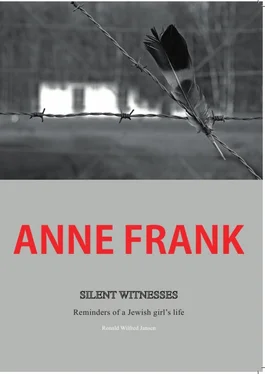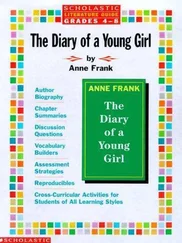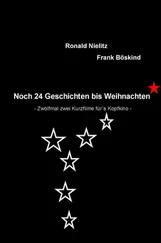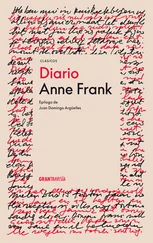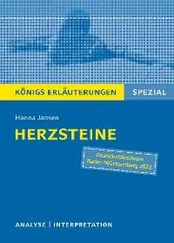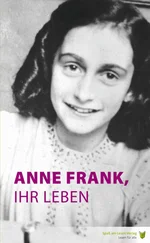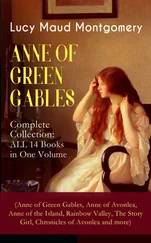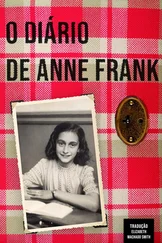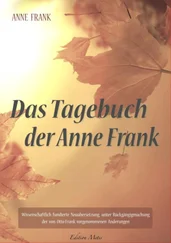After WWII, some of Frankfurts’ inhabitants blamed the Jews for the terrors of the war. Gradually, however, when people were able to look back on the war more objectively, they became a little more understanding towards the Jews.
In 1957, 2,000 teenagers travelled from Hamburg to Bergen- Belsen to commemorate Anne’s death. The memorial plate on the façade of 24 Ganghoferstrasse was placed on their initiative. Its inscription reads: ‘This used to be Anne Frank’s house (born on 12/06/1929 in Frankfurt A. Main). She became a victim of the national-socialist persecution and died in the Bergen-Belsen KZ-Lager in 1945. Her life and death—our obligation. The youth of Frankfurt.’ 59There was a memorial service in the Paulskirche in Frankfurt in the same year. 60The plate at 24 Ganghoferstrasse is the only sign I have seen on the former residences of Anne in Frankfurt am Main that commemorates her as a war victim. Although Frankfurt am Main does show some interest in her, there is a noticeable lack of a prominent statue of Anne in the centre of her place of birth.
There are, however, some general references to the war in the city centre. The commemorative plaque on Römerberg reads: ‘In this place, on 10 May 1933, national-socialist students burnt the books of literary authors, scientists, essayists and philosophers.’ The edge of the plaque reads: ‘This was merely a prelude, for where people burn books, people will eventually burn people.’ 61This is a quote from Heinrich Heine (1797-1856). The books burnt by the Nazis had been written by Jewish authors and social critics, such as Sigmund Freud (1856-1939), Stefan Zweig (1881-1942) and Bertold Brecht (1898- 1956).
There are a few references to Anne outside of the city centre, such as the Anne Frank School 62and the Anne Frank Strasse. The Jewish Monument at Battonnstrasse commemorates the Jewish inhabitants of Frankfurt am Main who were murdered, including Anne. 63It is located next to the former synagogue that was destroyed during Kristallnacht in 1938. The Historic Museum in Frankfurt am Main 4 organised exhibitions about Anne. The exhibition Anne Frank in the World, 1929-1945 took place in the Paulskirche 64in 1985. 65In 1992, the Jewish Museum in Frankfurt am Main (14/15 Untermainkai) 66opened the Museum Judengasse , which exhibits the history of Judaism in Frankfurt am Main and commemorates the Jewish inhabitants of Frankfurt who were killed by the Nazis. In 2008, I visited a special photographic exhibition Special Express to Death: Deportation on the German National Railway about the role the Deutsche Bundesbahn (DB) played in transporting Jews and gypsies to the concentration camps. Anne is listed in the Gedenkbuch Opfer der Verfolgung der Juden unter der nationalsozialistischen Gewaltherrschaft in Deutschland 1933-1945 (Memorial Book: Victims of the Persecution of Jews under the National-Socialist Tyranny in Germany 1933-1945) by the German Federal Archives 67that accompanied the exhibition.
Anne’s photograph was probably not on display in this exhibition since she was not deported directly from Germany to the extermination camps in the east. When she was deported from the Westerbork camp to Auschwitz, however, she will have been transferred onto the German National Railway once she had crossed the German border.
The exhibition also displayed many children of Anne’s age group who had lived in Germany or had fled to France and who were killed by the Nazis. Steffi Bernheim, for example, was born on 11 January 1930 in Berlin. The Bernheims fled Germany and went to live in Paris, France, on 60 Rue de Provence. Steffi was arrested during a large-scale razzia and sent to Auschwitz on transport 23 on 24 August 1942, where she joined her mother, who had been imprisoned earlier.
Her father, Walter, and brother, Norbert, followed on transport 57 on 18 July 1943. 68This family’s fate is no less tragic than that of the Franks.
I experience my environment best when I walk. I ended up walking many miles to visit Anne’s locations. In spite of my hiking shoes, I had blisters on my feet. The current residents of 24 Ganghoferstrasse were considerate enough to offer me a ride back to 4 my hotel near Frankfurt central station, where I could enjoy a good night’s sleep.
1Source: (various) labels from the Kölner Hof hotel dated around 1900 and containing anti-Semitic texts. Archives of the Jewish Historical Museum , inventory no. 00004698.
2 http://www.annefrank.org/en/Anne-Frank/All-people/Otto-Frank/.
3‘ Wie die Mehrheit der Deutschen, reagierten die Juden auf die Kriegserklärungen im August 1914 mit vaterländischer Begeisterung zu machen.’ From: Rachel Heuberger and Helgo Krohn. Hinaus aus dem ghetto…Juden in Frankfurt am Main 1800-1950 [Out of the Ghetto: Jews in Frankfurt am Main 1800-1950] (Frankfurt am Main, 1988), p. 129.
4‘ An die deutschen Juden! In schicksalsernster Stunde ruft das Vaterland seine Söhne unter die Fahnen. Dass jeder deutsche Jude zu den Opfern an Gut und Blut bereit ist, die die Pflicht erheischt, ist selbstverständlich. Glaubensgenossen! Wir rufen Euch auf, über dass Mass der Pflicht hinaus Eure Kräfte dem Vaterlande nu widmen! Eilet freiwillig zu den Fahnen! Ihr alle –Männer und Frauen- stellet Euch durch persönliche Hilfeleistung jeder Art und durch Hergabe von Geld und Gut in den Dienst der Vaterlandes! Berlin, den 1. August 1914.’ From: Rachel Heuberger en Helgo Krohn. Hinaus aus dem ghetto…Juden in Frankfurt am Main 1800-1950 (Frankfurt am Main, 1988), p. 130.
5Melissa Müller, Anne Frank. De biografie (Amsterdam, 1998), p. 27. Original German edition: Das Mädchen Anne Frank. Die Biographie . English edition: Anne Frank. The Biography (Macmillan, 2013).
6Max C. van der Glas, email dated 22 December 2010.
7Rachel Heuberger and Helgo Krohn. Hinaus aus dem ghetto…Juden in Frankfurt am Main 1800-1950 (Frankfurt am Main, 1988), p. 147.
8 http://www.freebase.com/view/en/herbert_frank .
9 http://www.freebase.com/view/m/073jm1t .
10Some authors describe Otto as a born banker. ‘Otto was de enige van zijn broers die zich interesseerde voor de bankzaken.’ [Otto was the only one amongst his brothers who was interested in banking.] From: Hans Ulrich, Wie was Anne Frank? Haar leven, het Achterhuis en haar dood (Laren, 2010), p. 27. English edition: Who was Anne Frank: Her Life, the Secret Annex and her Death. (Verbum, 2011).
11 The Diaries , 14 October 1942.
12604 Keizersgracht, see http://monumentenregister.cultureelerfgoed.nl/ .
13‘Otto did not marry Edith because of her dowry.’ Buddy Elias, email dated 30 December 2010.
14Cor Suijk (born in 1924, hereafter referred to as Cor) is the former director of the Anne Frank Stichting. In the beginning of the 1980s, he received four original pages from The Diaries from Otto’s inheritance in which Anne states that Otto never loved Edith much, because he could not forget his first love whose parents would not let her marry him. Otto wanted Cor to receive these papers after his death. Insiders already knew about these pages from the A version of Anne’s diary. These four pages, however, were part of the rewritten (B-)version by Anne, which she planned to publish after the war. 4 Otto Frank, who passed away in 1980, wanted to make these extracts public after his demise. The NIOD added a note to the 8 February 1944 entry of Anne’s diary: ‘In the 47 lines omitted here [the four retrieved pages] Anne Frank gave an extremely unkind [which is incorrect, Anne shows empathy for her mother] and partly unfair picture [also incorrect, Anne describes her parents’ marriage as not characterised by real passion but by correctitude] of her parents’ marriage. At the request of the Frank family this passage has been deleted.’ From: De Dagboeken van Anne Frank [The Diary of Anne Frank: The Critical Edition.] Rijksinstituut voor Oorlogsdocumentatie (Amsterdam, 1990), p. 499. A nasty quarrel ensued. According to Cor (email dated 13 January 2011), various sources, e.g. the NRC national paper 13 March 2001 issue, incorrectly stated that he had sold the retrieved pages written by Anne Frank to the NIOD. ‘ When, after a long, antagonistic row between the NIOD, the Anne Frank House and the Anne Frank Fonds about my possession of the pages, the government prosecutor concluded after thorough investigation that I was the legal owner, I donated the pages to the NIOD. Three months later, the Dutch government, as a token of appreciation, decided to support my educational institute in the United States [ www.c-hef.org] with a considerable amount of money.’ The Anne Frank Fonds is of the opinion that it holds the rights to the diaries. The missing pages were published in The Diary of Anne Frank: the Critical Edition by the Netherlands Institute for War Documentation (1 stDutch ed. Amsterdam 1986, 1 stEnglish ed. New York 1989).
Читать дальше
